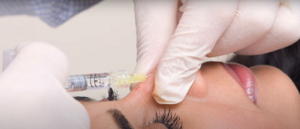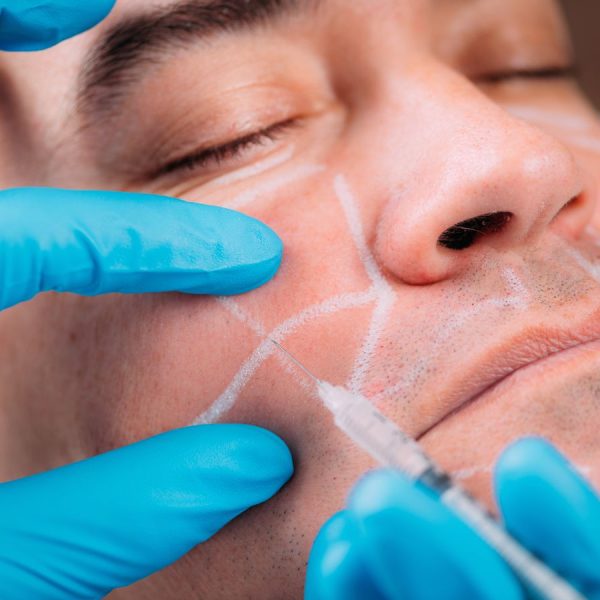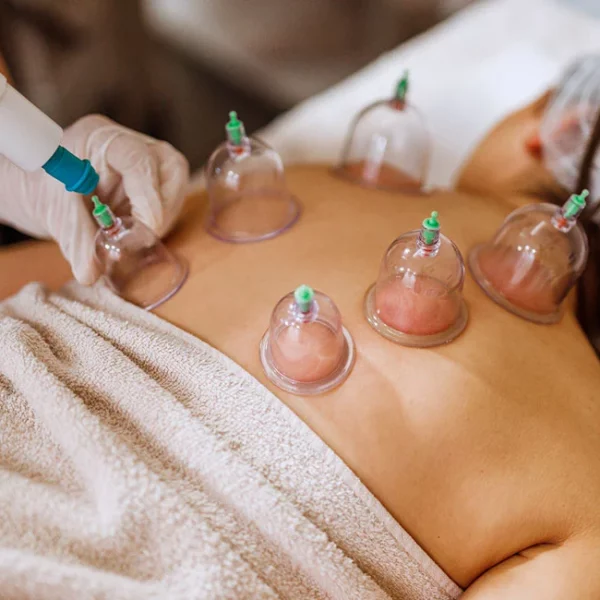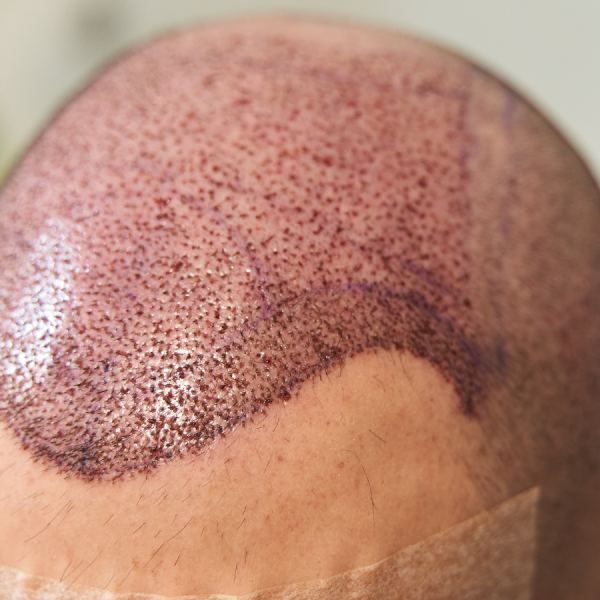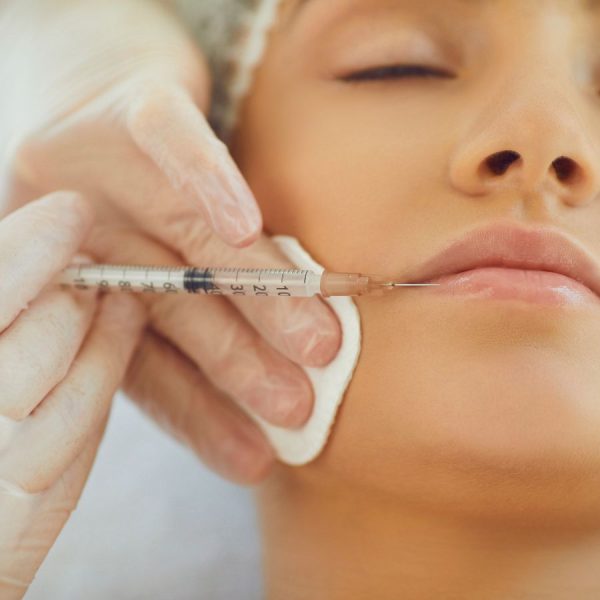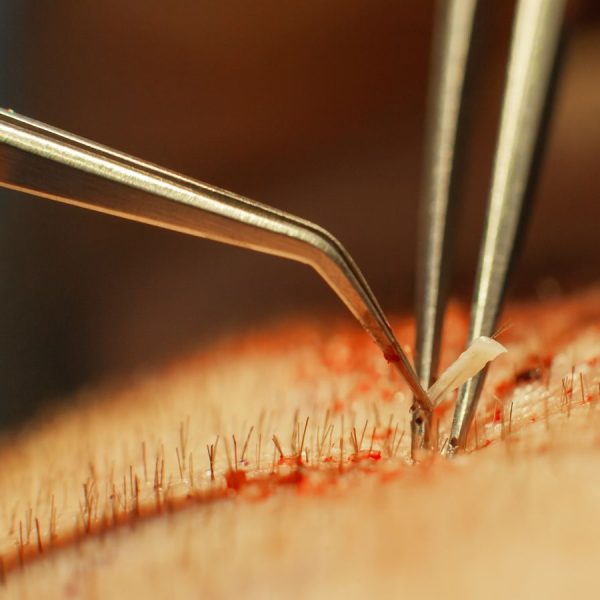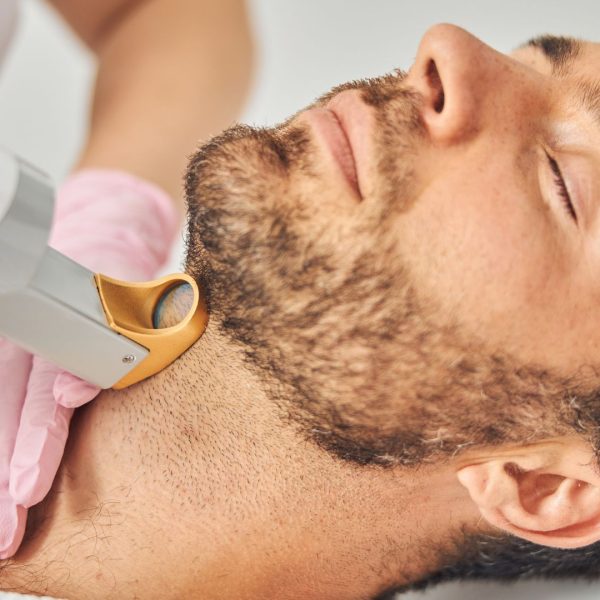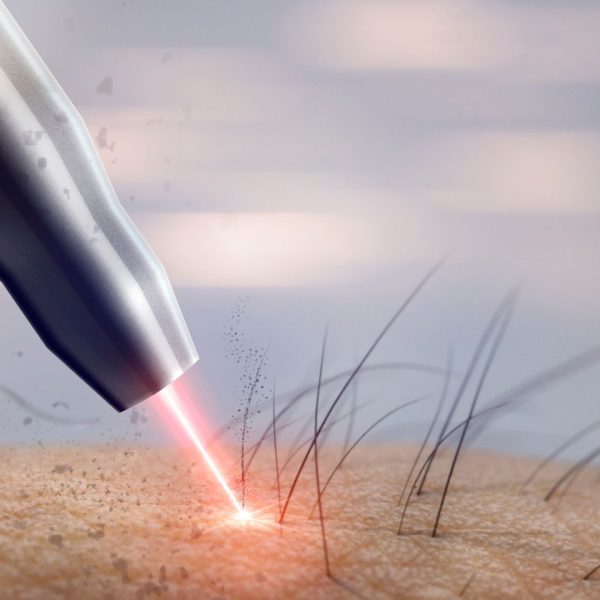In a society where self-image carries considerable weight, the experience of hair loss can be deeply distressing for many individuals, transcending the mere physical realm and taking a toll on their overall confidence and well-being. The emotional impact of baldness reverberates through various facets of life, impacting self-esteem, altering personal perceptions, and influencing the levels of confidence individuals may have once taken for granted. The societal norms and ideals that associate a full head of hair with youthfulness and vitality contribute to the emotional weight that individuals experiencing hair loss often carry.
Fortunately, the relentless evolution of medical technology has opened new avenues for those grappling with the emotional aftermath of hair loss. Within this transformative landscape, hair transplants have emerged as a beacon of hope and a definitive solution to the challenges posed by baldness. This comprehensive guide serves as a compass for individuals navigating the journey from the distressing reality of hair loss to the restoration of confidence through the lens of hair transplant procedures. It seeks to illuminate the intricacies of this transformative process, providing insights into the emotional, psychological, and physical aspects that contribute to the journey of regaining not just hair but also a profound sense of self-assurance.
The emotional impact of hair loss extends beyond the aesthetic concern of physical appearance, delving into the core of an individual’s identity and self-worth. The psychological toll can lead to a sense of vulnerability, self-consciousness, and a hesitancy to engage fully in social interactions. As we delve into the realm of hair transplants, it is essential to recognize the multifaceted nature of this experience and the profound effects it has on an individual’s mental and emotional well-being.
Against this backdrop, the transformative power of hair transplants comes to the forefront. This procedure goes beyond the surface, offering a comprehensive solution that not only addresses the physical aspect of hair loss but also contributes to the restoration of confidence, self-esteem, and a positive self-image. By exploring the journey from baldness to confidence restoration, this guide endeavors to shed light on the nuanced process of undergoing a hair transplant – from the initial considerations and consultations to the surgical procedure itself and the subsequent phases of recovery and regrowth.
In navigating this journey, individuals are empowered to make informed decisions, embracing the possibilities offered by modern hair transplant techniques. The guide aims to demystify the process, alleviate concerns, and inspire confidence in those seeking a transformative solution to their experience of hair loss. Ultimately, the exploration of hair transplants becomes a narrative of resilience, empowerment, and the reclamation of one’s sense of self, illustrating that confidence can indeed be restored beyond the challenges of hair loss.
Understanding Hair Loss:
Before exploring the potential solutions offered by hair transplants, it is imperative to delve into the intricate web of factors that underlie hair loss. This common concern is influenced by a myriad of elements, encompassing genetic predispositions, hormonal fluctuations, lifestyle choices, and environmental influences. Male-pattern baldness, a prevalent form of hair loss, is predominantly dictated by genetic factors, with a hereditary link contributing to the gradual thinning of hair and receding hairlines. On the other hand, hormonal imbalances, stress-induced conditions, and nutritional deficiencies can contribute to hair thinning in both men and women, amplifying the complexity of the issue.
Understanding the root causes of hair loss serves as the compass for those navigating this challenging terrain. Genetic factors may set the stage for certain types of hair loss, but environmental and lifestyle elements play pivotal roles in accelerating or mitigating its progression. This nuanced understanding forms the foundation for informed decisions regarding potential interventions, making it essential for individuals to grasp the multifaceted nature of hair loss before embarking on a journey toward restoration.
The Psychological Impact of Hair Loss:
The ramifications of hair loss extend far beyond the physical manifestations, delving into the emotional and psychological realms of an individual’s well-being. A lush and voluminous head of hair is often culturally associated with youthfulness, attractiveness, and vitality, creating a deeply ingrained societal perception. Consequently, hair loss becomes more than a mere cosmetic concern; it transforms into a sensitive and highly personal experience that can profoundly affect an individual’s self-perception and interactions with the world.
The emotional toll of hair loss manifests in various ways, with decreased self-esteem being a prevalent consequence. As individuals witness changes in their hair density or experience receding hairlines, there is a heightened self-consciousness that can impact their confidence levels. For some, this emotional impact may extend to social withdrawal, as they grapple with the perceived change in their appearance. Understanding the psychological dimensions of hair loss is paramount, as it underscores the importance of holistic interventions that not only address the physical aspect but also contribute to emotional well-being.
As we embark on a journey to explore the potential of hair transplants, acknowledging the intricate interplay between the physical and psychological aspects of hair loss becomes essential. The fusion of scientific understanding and empathetic consideration paves the way for comprehensive solutions that extend beyond the superficial, addressing the emotional nuances woven into the fabric of hair loss experiences.
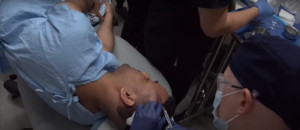
The Evolution of Hair Transplants:
The landscape of hair restoration has undergone a remarkable evolution, with hair transplants emerging as a beacon of hope for individuals grappling with the emotional and aesthetic challenges posed by hair loss. The journey of hair transplants has traversed a transformative path, witnessing substantial advancements that have redefined the possibilities in the field of hair restoration. Modern techniques have not only addressed the limitations of earlier methods but have also elevated the entire experience, offering individuals more natural-looking results and minimizing the downtime associated with the procedures.
The evolution of hair transplants signifies a departure from the once-stigmatized perception of artificial-looking hair plugs towards a new era of seamless, undetectable results. Innovations in technology, coupled with a deeper understanding of hair growth patterns and donor-site management, have propelled hair transplants into the realm of precision and artistry. As we explore the potential of these transformative procedures, it becomes evident that the evolution of hair transplants is a testament to the synergy between scientific advancements and the ever-growing demand for aesthetically pleasing, natural-looking outcomes.
Follicular Unit Transplantation (FUT) – A Pioneering Approach
In the annals of hair transplant history, Follicular Unit Transplantation (FUT) stands as a pioneering approach that marked a significant milestone in the quest for effective and lasting hair restoration. This technique introduced a strategic departure from earlier methods, focusing on the concept of follicular units – naturally occurring groups of one to four hair follicles. The key innovation lay in the harvesting process, involving a strip of hair-bearing skin from the donor area, typically situated at the back of the scalp.
The harvested strip was meticulously dissected into individual follicular units, preserving their natural arrangement and ensuring a harmonious result when transplanted into the balding areas. While FUT proved effective in yielding natural-looking results, it did come with a notable drawback – the creation of a linear scar at the donor site. This realization prompted the evolution of hair transplant techniques, with a collective focus on minimizing visible scarring and enhancing the overall patient experience.
As technology and techniques advanced, the limitations of FUT paved the way for more refined approaches, ushering in a new era of hair restoration. While FUT remains a viable option for some individuals, the field has since seen the rise of Follicular Unit Extraction (FUE) and other cutting-edge methods that address the concerns associated with scarring and offer greater flexibility in donor site selection. The evolution from FUT to more advanced techniques reflects the continuous commitment of the field of hair restoration to innovation, precision, and the pursuit of optimal, natural-looking results for individuals seeking to reclaim their confidence through transformative hair transplants.
Follicular Unit Extraction (FUE) – Precision and Minimal Scarring
The revolutionary impact of Follicular Unit Extraction (FUE) on the landscape of hair transplants cannot be overstated. This technique has ushered in a new era of precision and minimal scarring, transforming the entire experience for individuals seeking effective and aesthetically pleasing solutions to hair loss. FUE represents a paradigm shift from traditional methods, as it employs a minimally invasive approach to extract individual follicular units directly from the donor area.
In FUE, a specialized micro-punch tool is used to delicately harvest individual follicular units, each containing one to four hair follicles. The precision of this extraction process ensures that only healthy hair grafts are selected, optimizing the chances of successful transplantation. The beauty of FUE lies in the nearly undetectable scars it leaves behind, making it an ideal choice for those who prioritize discretion in their hair restoration journey. The tiny scars, often referred to as “dot scars,” are scattered across the donor area, allowing for short hairstyles without the worry of visible linear scars associated with older techniques like FUT.
Beyond the cosmetic advantages, FUE facilitates a quicker recovery compared to traditional methods. The minimally invasive nature of the procedure translates to less discomfort, reduced healing time, and a faster return to daily activities. As individuals explore the transformative potential of FUE, they discover not only a path to natural-looking hair restoration but also an approach that prioritizes their comfort and convenience throughout the entire process.
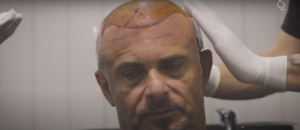
The Procedure Unveiled:
Unraveling the intricacies of the hair transplant procedure is essential for individuals considering this transformative journey. A comprehensive understanding of the steps involved not only dispels any apprehensions but also empowers individuals to make informed decisions about their hair restoration. The procedure typically begins with a thorough consultation, where the surgeon evaluates the individual’s hair loss pattern, discusses expectations, and designs a personalized treatment plan.
The next critical step involves the extraction of donor hair, which is where the chosen technique, such as FUE, comes into play. In the case of FUE, the surgeon utilizes a micro-punch tool to meticulously extract individual follicular units from the donor area, often located at the back or sides of the scalp. Simultaneously, the recipient area, where the hair will be transplanted, is prepared with tiny incisions that mimic the natural growth pattern of the hair.
The final phase involves the careful transplantation of the extracted follicular units into the recipient area, ensuring precision and attention to aesthetic detail. The surgeon strategically places the grafts to achieve a natural-looking distribution, taking into account factors such as hairline design and hair density. As the procedure concludes, individuals can anticipate a period of recovery, during which the transplanted hair follicles acclimate to their new environment and begin the process of regrowth.
By demystifying the hair transplant procedure, individuals gain valuable insights into what to expect at each stage of their transformative journey. This knowledge fosters confidence, dispels uncertainties, and reinforces the understanding that hair restoration is not just a cosmetic enhancement but a holistic process that intertwines science, artistry, and the individual’s unique vision of renewed confidence.
Consultation and Assessment
The transformative journey of a hair transplant commences with a crucial step – a comprehensive consultation and assessment. This initial phase is instrumental in laying the foundation for a personalized and effective hair restoration plan. A qualified and experienced hair transplant surgeon assumes the role of a guide, evaluating the extent of hair loss, meticulously examining the donor area (typically located at the back or sides of the scalp), and engaging in open communication with the patient to understand their expectations and goals.
During this consultation, the surgeon employs their expertise to assess the unique characteristics of the individual’s hair loss pattern, taking into account factors such as hair density, hairline design, and the potential progression of baldness. The goal is to establish realistic expectations and tailor the procedure to meet the specific needs and desires of the patient. This collaborative approach ensures that the envisioned outcome aligns harmoniously with the individual’s natural features, enhancing not only the physical appearance but also the overall sense of confidence and well-being.
The consultation phase serves as a two-way dialogue, where the surgeon educates the patient about the available techniques, addresses any concerns or questions, and outlines the potential results. This transparent and informative interaction fosters a sense of trust and empowers individuals to make informed decisions about their hair restoration journey. Ultimately, the consultation and assessment set the stage for a partnership between the patient and the surgeon, marking the beginning of a transformative experience guided by expertise and personalized care.
Donor Area Harvesting
A pivotal phase in both Follicular Unit Transplantation (FUT) and Follicular Unit Extraction (FUE) procedures is the harvesting of hair from the donor area. The donor area serves as the reservoir of healthy hair follicles that will be transplanted to the balding or thinning areas, contributing to the restoration of a fuller and more natural-looking head of hair.
In the FUT procedure, a strip of hair-bearing skin is surgically removed from the donor area, typically located at the back of the scalp. The skilled surgeon then carefully dissects this strip into individual follicular units, preserving their natural arrangement. While this method is effective, it does leave a linear scar, which is strategically positioned to be easily concealed by surrounding hair.
On the other hand, FUE focuses on a more refined and minimally invasive approach. Individual follicular units are extracted directly from the donor area using a micro-punch tool. This process results in tiny, nearly undetectable scars often referred to as “dot scars.” The surgeon’s precision during the harvesting phase significantly influences the overall outcome, impacting not only the success of the transplantation but also the aesthetic considerations, such as minimizing scarring.
The surgeon’s skill in donor area harvesting is a testament to the artistry intertwined with the science of hair restoration. It is during this phase that the foundation for a natural and harmonious result is laid, showcasing the significance of the surgeon’s expertise in ensuring a successful and aesthetically pleasing outcome for individuals embarking on their hair transplant journey.
Graft Preparation and Placement
With the harvested follicular units in hand, the next pivotal phase in a hair transplant procedure involves their meticulous preparation and strategic placement. The surgeon’s expertise shines during graft preparation, where the individual follicular units are delicately handled to ensure their viability for transplantation. This intricate process involves separating the extracted units into grafts containing one to four hair follicles, preserving their natural arrangement and orientation.
Once the grafts are prepared, the surgeon navigates the recipient area, strategically placing each graft in predetermined recipient sites. This step requires an artful eye and surgical precision to achieve a natural-looking hairline and optimal density. The surgeon takes into account the unique characteristics of the individual’s natural hair growth pattern, meticulously recreating it with the transplanted grafts. Attention to detail during graft placement is paramount, as it determines the overall aesthetic outcome of the procedure.
The careful orchestration of graft preparation and placement ensures a seamless integration of the transplanted hair with the existing hair, creating a result that not only restores hair but also enhances the individual’s overall appearance. The surgeon’s ability to mimic the natural patterns of hair growth and to judiciously distribute grafts contributes to a transformative outcome that harmonizes with the individual’s unique features.
Natural-Looking Results and Recovery:
A primary concern for individuals contemplating hair transplants is the attainment of natural-looking results and the subsequent recovery process. Modern techniques in hair restoration prioritize both aspects, assuring patients of transformative outcomes and a smooth post-operative experience. The goal is to not only address hair loss but to do so in a manner that is undetectable, ensuring the results blend seamlessly with the individual’s natural hair.
The emphasis on achieving natural-looking results is reflected in the meticulous planning of the procedure, the careful design of the hairline, and the strategic placement of grafts. Surgeons leverage their artistic sensibilities and surgical precision to create an outcome that not only restores hair but also enhances the overall facial aesthetics. The synergy between science and artistry ensures that individuals undergoing hair transplants not only regain their hair but also enjoy results that look and feel completely natural.
Equally crucial is the recovery process, which has been streamlined through advancements in technology and surgical techniques. Patients can typically expect a smooth post-operative experience with minimal discomfort. The downtime is significantly reduced, allowing individuals to return to their regular activities relatively quickly. As the transplanted hair follicles acclimate to their new environment, a gradual and natural regrowth process begins, offering patients the joy of witnessing their restored hair flourish.
In essence, the modern approach to hair transplants is a testament to the field’s commitment to providing not just hair restoration but an experience that prioritizes naturalness, aesthetics, and patient comfort. As individuals navigate the transformative journey of hair transplants, they can do so with confidence, knowing that the results are designed to be both impressive and indistinguishable from natural hair.
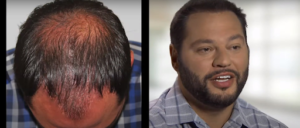
Natural Growth and Integration
The true success of a hair transplant is not solely measured by the mere presence of transplanted hair but by its natural growth and seamless integration with the existing hair. Skilled surgeons employ a nuanced approach, considering various factors to ensure that the transplanted hair harmonizes flawlessly with the patient’s unique features. Central to this success is the careful consideration of the hairline design, where surgeons meticulously recreate a natural and age-appropriate front hairline. The angle of implantation is equally crucial, as the transplanted hair must align with the natural growth pattern to avoid an artificial appearance.
The distribution of grafts is an artful endeavor, as surgeons strategically place them in a way that achieves optimal density without creating an unnatural or clustered appearance. This attention to detail extends to the entire recipient area, ensuring that the transplanted hair seamlessly integrates with the patient’s existing hair, creating a result that is indistinguishable from natural growth. The synergy between science, surgical skill, and artistic sensibilities becomes evident in the final outcome, where the transplanted hair not only restores what was lost but enhances the overall aesthetic appeal.
The commitment to natural growth and integration distinguishes modern hair transplant techniques, emphasizing results that go beyond surface-level improvements. The success of the procedure lies in the ability to provide individuals with a renewed sense of confidence, where the transplanted hair is not merely an addition but an integral part of their authentic self.
Post-Operative Care and Recovery
While the recovery period following a hair transplant varies among individuals, post-operative care is universally crucial for achieving optimal results. Patients are typically provided with specific guidelines to follow during the initial days and weeks after the procedure. Strenuous activities, including heavy lifting and intense exercise, are often advised against to prevent unnecessary strain on the healing scalp.
Protecting the scalp from direct sunlight is imperative during the early stages of recovery. Patients are encouraged to wear hats or use sunscreen to shield the treated area, promoting a healthy healing process and minimizing the risk of complications. Additionally, adherence to prescribed medications is essential to aid in healing and minimize any potential discomfort. These medications may include antibiotics to prevent infection and anti-inflammatory drugs to reduce swelling.
Regular follow-up appointments with the surgeon allow for monitoring the progress of the healing process and addressing any concerns that may arise. The post-operative care and recovery phase is a collaborative effort between the patient and the medical team, with the goal of ensuring a smooth and successful outcome. As the transplanted hair follicles acclimate to their new environment, patients can anticipate a gradual and natural regrowth process, culminating in the full realization of the transformative results.
In essence, the post-operative care and recovery phase is a crucial chapter in the overarching narrative of a hair transplant journey. It represents the bridge between the surgical procedure and the ultimate manifestation of natural-looking, seamlessly integrated results. By adhering to the prescribed care guidelines and maintaining open communication with the medical team, individuals actively contribute to the success of their hair restoration venture, embracing the promise of renewed confidence and aesthetic enhancement.
Restoring Confidence and Quality of Life:
The significance of hair transplants extends far beyond the physical transformation they facilitate; it encompasses a profound impact on an individual’s confidence and overall quality of life. As individuals witness the restoration of their hair, they often experience a rekindling of self-assurance and a renewed sense of identity. This transformation reaches beyond the surface, influencing various aspects of personal well-being and contributing to an enhanced overall quality of life.
Psychological Benefits
Numerous studies have underscored the psychological benefits associated with successful hair transplants, revealing a substantial improvement in self-esteem and overall psychological well-being among individuals who undergo these transformative procedures. The visible changes in appearance, coupled with the restored sense of hair and the rejuvenation of one’s image, create a positive ripple effect on an individual’s mental and emotional state.
The renewed sense of confidence emanating from a successful hair transplant can have far-reaching consequences in various facets of life. Personal relationships often see improvement as individuals become more comfortable and self-assured in their appearance. The ripple effect extends to career prospects, where increased confidence may positively influence professional interactions and opportunities. Social interactions, too, undergo a positive shift, as individuals feel more at ease and self-assured in diverse social settings.
The psychological benefits of hair restoration go beyond mere aesthetics, contributing to a holistic sense of well-being. The transformative impact on an individual’s confidence and self-image translates into a more positive outlook on life, fostering resilience, empowerment, and a deeper connection with one’s authentic self. As individuals reclaim their confidence through hair transplants, they embark on a journey toward an enriched quality of life, where self-assurance becomes the cornerstone for personal growth and fulfillment.
Lifestyle Enhancement
The restoration of a fuller head of hair through transplant procedures often transcends the realm of physical appearance, leading to significant lifestyle enhancements. Individuals who undergo successful hair transplants frequently find themselves more at ease and confident in various social settings. The positive impact on self-image and confidence becomes a catalyst for a more active and engaged lifestyle, contributing to overall well-being.
The newfound sense of confidence following a hair transplant can inspire individuals to participate more fully in social and professional activities. Whether it’s attending social gatherings, networking events, or even pursuing new hobbies, the positive transformation in one’s appearance often serves as a springboard for a more vibrant and fulfilling lifestyle. The removal of concerns related to hair loss allows individuals to focus on enjoying life to the fullest, unencumbered by self-consciousness or reservations.
This lifestyle enhancement is not just about external perceptions but about an internal shift in how individuals perceive and engage with the world. A fuller head of hair can act as a confidence booster, encouraging individuals to step out of their comfort zones, embrace new opportunities, and actively participate in the richness of life. The ripple effect extends to personal relationships, career aspirations, and the overall enjoyment of life’s experiences.
As individuals experience lifestyle enhancements through successful hair transplants, they often find themselves more aligned with their authentic selves, unburdened by the limitations that hair loss may have imposed on their self-image. This newfound sense of freedom and confidence can redefine the way individuals approach life, fostering a positive mindset and contributing to an overall improvement in their quality of life.
The journey from hair loss to a revitalized sense of self through hair transplants goes beyond addressing mere baldness. It signifies a transformative process that has the potential to positively impact various facets of an individual’s life. In the contemporary landscape of advanced techniques and skilled surgeons, the accessibility of this transformative procedure has opened doors for many seeking to restore not only their hair but also their confidence and zest for life. Embracing the possibilities offered by hair transplants is an empowering choice that not only rejuvenates physical appearance but also revitalizes the spirit, proving that confidence can indeed be restored beyond the challenges posed by baldness.


